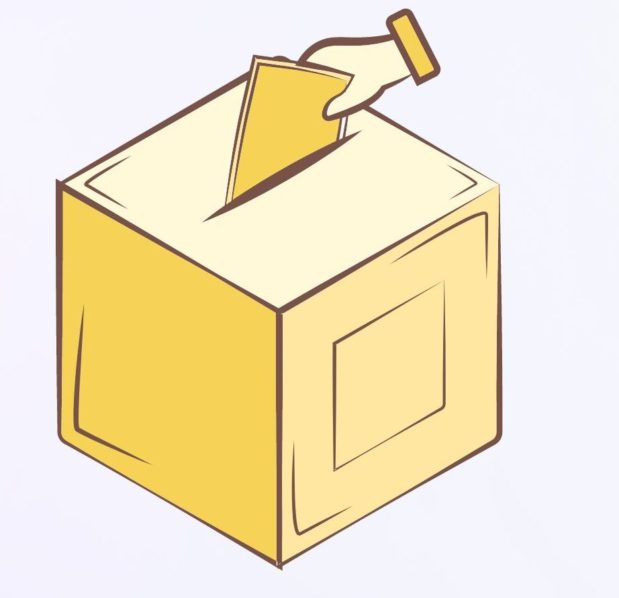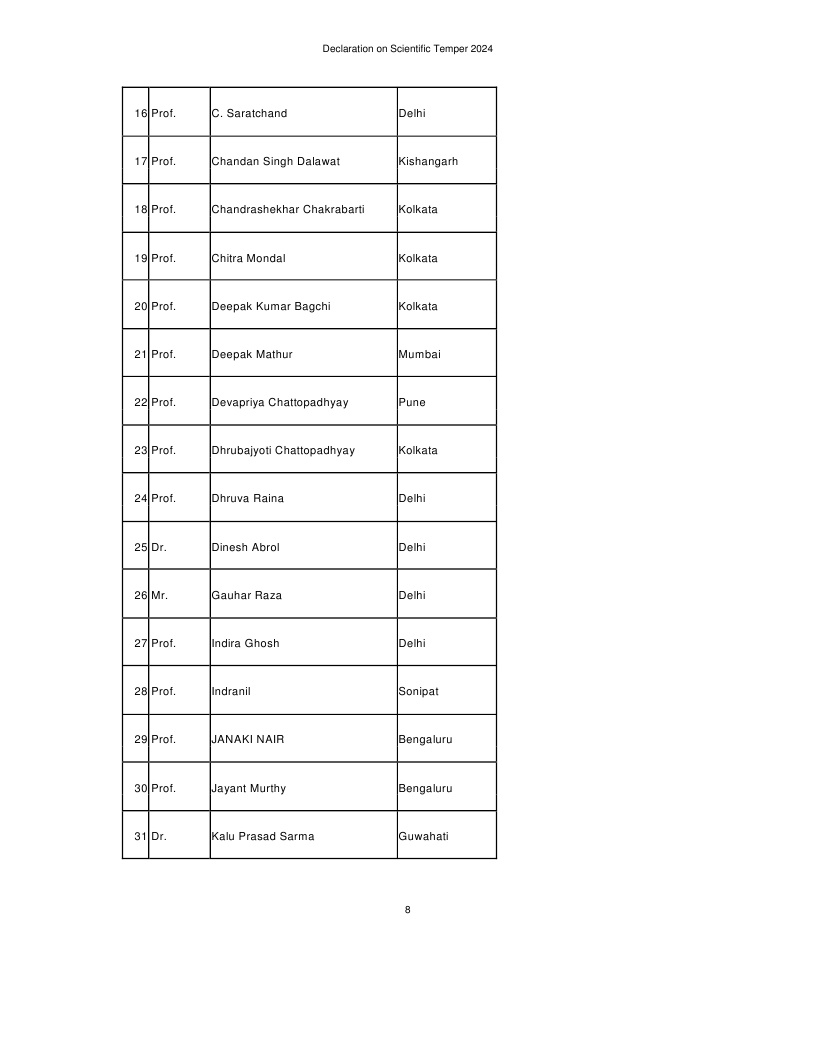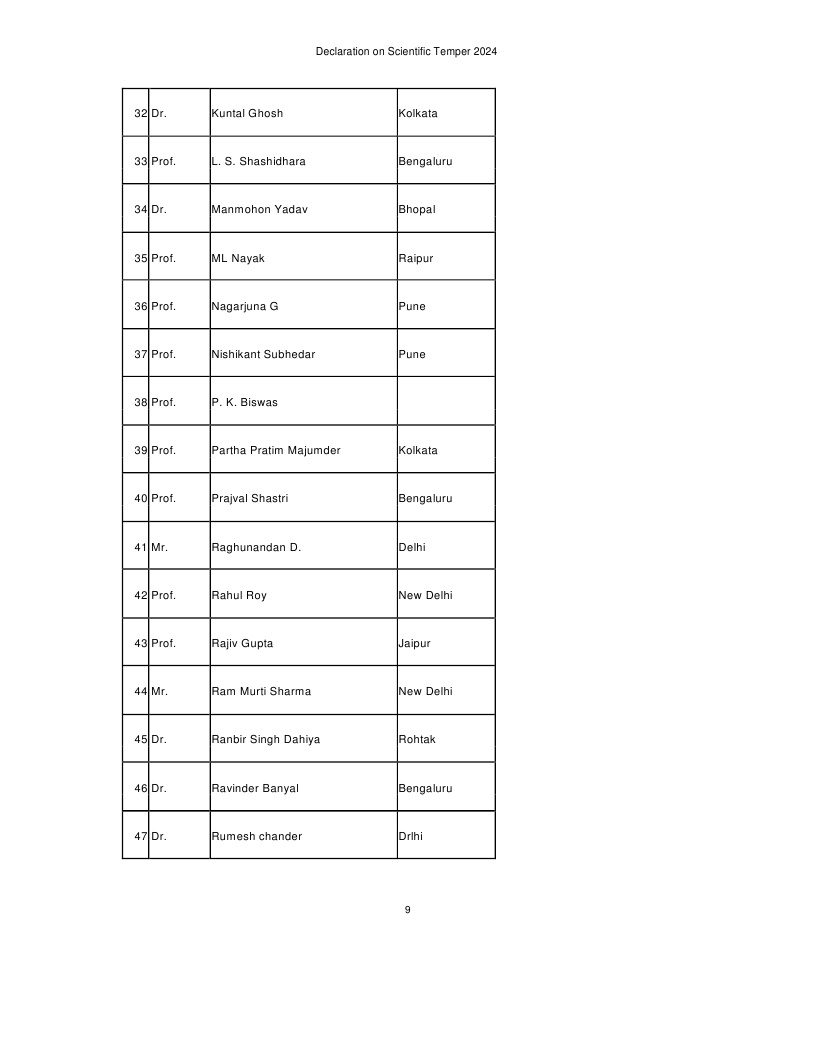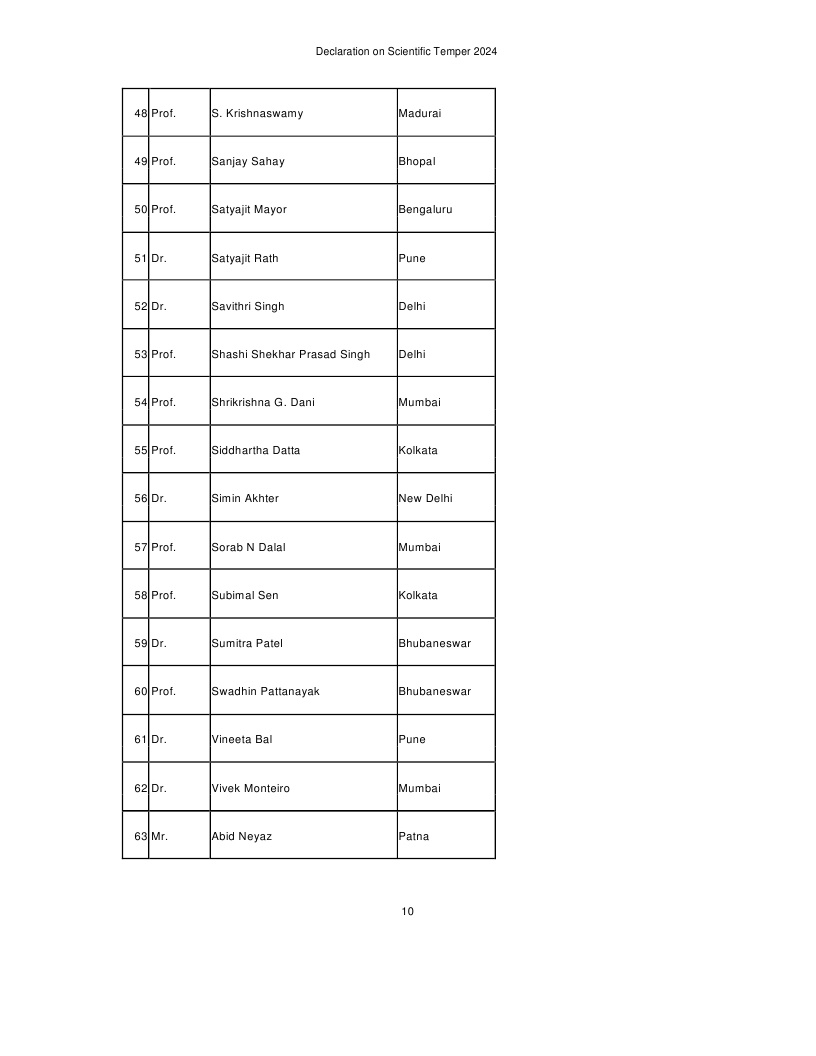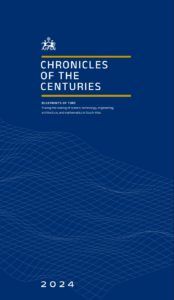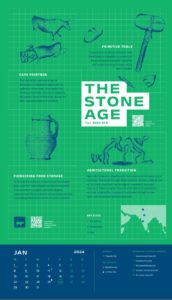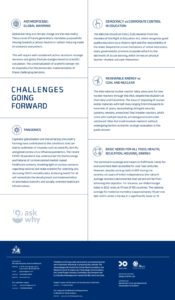Read the manifesto from JVV Andhra Pradesh in Telugu
Click here to read the pdf of the AIPSN brief for Political Parties
28 Mar 2024
AIPSN brief to the political parties for consideration in their election manifesto
The All India People’s Science Network (AIPSN) – a platform of people’s science movements across the country has the following positions on various critical issues e.g., propagation of scientific temper, S&T policy and process, Environment and Water resources, Health and Agriculture. As the country gears up for the 18th General Election, we would like to present these positions to be considered for inclusion in the electoral manifesto of the secular, democratic political parties of the country.
- On Scientific Temper
Article 51A (h) of the Constitution of India speaks of the duty of citizens to promote scientific temper. Recently, new challenges have emerged in the country in the form of strong socio-political narratives, backed by the State power, that seek to oppose any scientific approach, evidence-based reasoning or, indeed, any perspective that acknowledges universal scientific knowledge. We demand:
- Promote the separation of State apparatus from religion.
- Promotion and support of campaigns for popularization of science and its methods, and for promotion of scientific temper, evidence-based reasoning and critical thinking.
- Reversal of the present government’s various methods and measures to undermine scientific temper, critical thinking and evidence-based reasoning in governance, education and among the wider public
- Reconstitution of text-book committees to reverse the present. government’s anti-science revision of NCERT textbooks so as to promote critical thinking among students; re-write these textbooks to address deletion of Darwin’s theory of evolution and various chapters/ sections on India’s natural resources, forests, environment, mineral resources etc, and rectify the distorted picture of ancient Indian civilization projected in these texts.
- A thorough revision of the now compulsory UG/PG Courses and reading material on so-called “traditional Indian knowledge systems;” revise teaching material for new optional Courses on Science, Technology and other Knowledge Systems in Ancient and Medieval India based on the vast body of historical evidence-based material already available on the subject.
- Correction of the unscientific view being projected in educational institutions and among the wider public of imaginary achievements in S&T in ancient India, and the primacy and superiority of only one stream of cultural-religious-linguistic knowledge, as against the diverse sources and streams of knowledge in the Indian civilization including bi-directional exchanges with other civilizations for a true picture of the growth of science.
- Restoration of autonomy of academic and research Institutions in both natural and social sciences; pay due regard to research/survey-based data as basis for evidence-based policy-making; correct retrospective manipulation of data to suit ideological narratives; defend and restore academic freedom and pluralism of opinion in universities and research institutes; restore the confidence of the people in scientific institutions
- Strict monitoring and regulation of the dissemination of “magical remedies,” pseudo-science and superstitious beliefs through commercial activities and in the media, including through Anti-Superstition legislation in the Centre and States.
- Resumption of population census driven public policy framing.
- On Science and Technology (S&T)
- Enhancement of public funding of indigenous research in S&T to at least 2 per cent of GDP, with due importance to basic research.
- Strengthening of the university system in research and development (R&D).
- Decentralization of systems and processes for research funding; scrap the highly centralized National Research Foundation (NRF) set up under the NEP, which also burdens State governments without according to them equitable participation in decision-making; enhance research in state-level universities and collaborations with Central universities and national S&T institutions.
- Allocation of funds for state-level initiatives for S&T interventions to tackle people’s problems e.g. drought, water resource management, rural livelihoods, issues faced by marginalized communities.
- Provision of requisite mission-mode R&D funding for identified sectors of the “4th Industrial Revolution” such as Artificial Intelligence (AI), Internet of Things (IoT), bio- and nano-technology etc towards self-reliance in advanced technologies expected to dominate the “knowledge era,” but in which India is in danger of being left behind in pursuit of externally-dependent and false “atma-nirbharta”; also focus on agricultural research to break monopolies of MNCs and enable climate-resilient agriculture/horticulture.
- Increase in number of research fellowships especially for first generation students; increase number of faculty research positions in institutes; increase quality and quantity of PhDs in which India lags behind.
- Systematic measures to increase participation of women in STEM (science, technology, engineering and mathematics) research and jobs
- Initiation of measures to reduce bureaucratism in S&T Institutions, and encourage academic freedom and culture of research towards reversing brain drain; reverse current trend of sycophancy, fear and discouragement of pluralism in universities and research institutes.
- Regulation of AI, genetic engineering, data-mining and IT-based surveillance so as to ensure the public good.
- Review of decision to close down many government-funded S&T Institutions; resuming government support for a restructured Indian Science Congress.
- Promote free and open source software (FOSS) and other new technologies, free from monopoly ownership through copyrights or patents; “knowledge commons” to be promoted across disciplines e.g. like biotechnology, AI and drug discovery.
- Recognition of digital infrastructure as public infrastructure to be used for public good.
- Investment in public communication networks and free knowledge access to scientific and other academic publications without copyright barriers.
- Ensuring all public funded research is made accessible to all.
- Rigorous double-blind clinical trials with publication of data for open review for approval of new medicines, vaccines etc.
- Environment
Various dilutions of regulatory provisions for environmental protection have taken place in the recent past that would have serious impact on our natural resources and climate and will affect people’s livelihoods and wellbeing. There will have to be reversals of these changes. The specific demands are the following:
- The system and processes of Environmental Impact Assessment (EIA) and Environmental Clearances at State and Central level be made effective, time-bound, transparent, accountable, and free of conflict of interests. EIA is to be conducted preferably through an independent Environmental Protection Agency; repeal EIA Notification 2020 and issue revised guidelines.
- Economy-wide measures be planned and initiated to reduce greenhouse gas (GHG) emissions under the UNFCCC framework as applicable to developing countries, through effective policies, regulation, de-carbonization, energy efficiency in all sectors of production and consumption, while providing for a just transition from fossil fuels; promotion of renewable energy such as solar and wind; reducing energy inequality and promoting energy access for economically weaker sections such as in public transport; India’s updated Nationally Determined Contribution (NDC) required to be submitted to UNFCCC in 2025 to be re-cast through a participatory process involving all stakeholders.
- A National Adaptation Plan (NAP) should be evolved through a participatory process involving all stakeholders especially States to tackle climate impacts such as on agriculture, extreme rainfall and related landslides and urban flooding, heat waves and urban heat islands, coastal erosion and sea-level rise; streamline systems to tackle natural and climate-related disasters; evolve and implement climate resilient development strategies especially addressing the needs of vulnerable populations; provide adequate funds from the Centre and build capabilities of States and local governance structures for the above.
- Sustainable and environment/climate-friendly development strategies should be evolved for the fragile Himalayan region and eco-sensitive regions of Western Ghats and the North-East; undertake comprehensive review of infrastructure development and urbanization in hill areas, especially in the Western Himalayan region.
- Thoroughly revise National Clean Air Programme (NCAP) towards rapid and goal-oriented reduction of air pollution in urban areas especially through promotion of public mass transportation in preference to personal vehicle use, and effective regulation of polluting industries and construction activities; strengthen Central and State regulatory authorities.
- Urgently initiate measures to prevent degradation and destructive development of riverbeds and flood plains, including in urban areas.
- Undo different provisions of the Forest (Conservation) Amendment Act, apart from the modified definition of Forests struck down by the SC, especially 100 km from international boarder and LAC/LOC being exempt from any regulatory measure; ensure protection of rights of tribals and other forest dwellers under Forest Rights Act, 2006.
- Repeal provisions of biodiversity Amendment Act 2023 which permits transfer of knowledge regarding bio-diversity resources to corporate without permission of National biodiversity Authority, and also denies local communities of due compensation or share of these benefits.
- Scrap the environmentally disastrous and pro-corporate islands Development Plan for Andaman & Nicobar and Lakshadweep Island chains, without due consultation with local population in Lakshadweep, and endangering the tiny remaining populations of mostly isolated tribes in the Andamans; re-examine feasibility and location of proposed naval base in A&N.
- Scrap environmentally dangerous National Oil Palm Mission with highly inflated claims of yields and focusing on eco-sensitive North-East and Andaman Islands.
- Water Resources
- Re-formulate National Water Policy treating water as a scarce public good; tackle the growing water crisis; enhance equitable water availability for optimized domestic use, irrigation and industry through effective protection of rivers, expansion of water bodies and increased groundwater recharge; appropriate legislation, effective regulation and demand management of water; water audits and measures to conserve, treat and recycle water especially in urban areas.
- Ensure equitable provision of WHO-standard piped potable drinking water to all households
- Halt privatization of water resources and water distribution utilities in urban areas and recognise the right to water as part of the right to life.
- Check pollution of rivers and other water bodies through effective legislation, regulation and enforcement of sewage and other waste-water treatment and recycling policies; withdraw provisions of Water (Prevention and Control of Pollution) Amendment, 2024 allowing Centre to override State Pollution Control Boards (SPCBs).
- Undertake comprehensive review of the programme and projects for inter-linking of rivers.
- Plan and urgently implement measures to protect and improve catchment areas of major rivers especially in the Himalayan region; also take all steps possible to check glacier melting rates such as through regulation of fossil-fuel powered vehicular movement and air pollution in mountain regions.
- Health
- Make right to free health care justiciable through enactment of appropriate legislations at both Central and State levels.
- Retain health services as a state subject with strong emphasis on federalism.
- Public expenditure on health to be raised to at least 3.5 per cent in the short term and 5 per cent of the GDP in the long term, with at least 1% and 2% respectively coming from the Centre.
- Out-of-pocket expenditure on health to be brought to below 25% of health spending expand and strengthen the public healthcare system to ensure free availability of quality health care at all levels, including entire range of medicines, diagnostics and vaccines, and accountability to local communities.
- Scrap the government-funded PMJAY/Ayushman Bharat health insurance scheme and replace it with a Public-centred Universal Health Care system.
- Reverse the privatisation of health care services and outsourcing of services through PPPs.
- Reverse the re-branding of Health and Wellness Centres as ‘Arogya mandirs’.
- Extend and reform the ESI scheme to effectively protect workers’ health in both organized and unorganized sector, and also covering occupational health.
- Effectively regulate the private health care sector, especially corporate hospitals which should be brought under the Clinical Establishment Act. Modify the National Clinical Establishment Act, 2010 ensuring implementation of the Patients’ Rights Charter and standardization of reasonable rates and quality of various services.
- Ensure right-based access to comprehensive treatment and care of persons with mental illness through integration of the revised District Mental Health Programme with the National Health Mission.
- Adopt a people-centred, rational pharmaceutical policy with effective cost-based price controls, elimination of irrational and hazardous formulations, and a comprehensive generic medicines policy covering labelling, prescription and availability at all retail outlets; ensure availability of essential drugs free of cost at all public health care facilities.
- Initiate programs to break monopolies of pharmaceutical multinational companies in critical areas.
- Revive public sector pharmaceutical units to harness them for production of essential drugs and vaccines, and reverse privatization trends; reinstate Open-Source Drug Discovery (OSDD) programmes and collaborative R&D for affordable medicines; remove GST for life-saving and crucial medicines.
- Strictly control and regulate clinical trials and prohibit unethical clinical trials; develop a justiciable charter of rights for clinical trial participants
- Remove US government’s drug law enforcing agency USFDA’s offices and officials from India.
- Resist dilution of India’s Patent of Laws and reject provisions in Free Trade Agreements that obstruct domestic production low-cost generic drugs.
- Ensure effective, appropriate regulatory oversight of AYUSH system of medicine, while supporting evidence-based use of such systems.
- Give priority to the setting up of new public colleges to train doctors and nurses, especially in underserved areas such as in the North East and in poorer States. Training institutes to be set up for health workers.
- Agriculture
Right to land, water and commons for all
- Provide equitable access to land and water: legislate for homesteads for the rural poor; grant land rights to landless for cultivation; promote kitchen gardens, backyard poultry, cattle sheds and group farming.
- Place all above-ceiling land presently held by public or private entities under control of the state and union government for the redistribution to the landless.
- Create a register of tenants and provide smallholders with secure tenancy. Give tenant farmers statutory support, recognise tenants as beneficiaries of schemes announced for individual benefits, and access to benefits from sector wide schemes financed through public investment.
- Recognize women as farmers and grant them land rights, secure their tenancy rights over leased lands.
- Recognize land rights of Adivasi farmers, implement Forest Rights Act (FRA), review all rejections under FRA, and roll back pro-corporate amendments to Indian Forest Act, 1927.
Right to Food, Employment, Education, Health and Social Protection
- Ensure job security and minimum wage by extending the number of workdays from 100 to 200 workdays in rural areas @ Rs. 800 wages per day, implement existing provision of 100 days of MGNREGA without creating digital hurdles.
- Introduce a provision of 100 days of labour support for the SC, ST, and other small and marginal farmers for land development and for the adoption of integrated farming systems (IFS) including natural farming, thus 200 days of rural employment @ Rs. 800 wages per day.
- Enact old age pensions.
- Provide childcare and crèche facilities in agricultural workspaces.
- Provide for separate courts for protection against caste, ethnic, religious, gender-based oppression.
- Introduce Urban Employment Guarantee Act, guarantee employment for graduates from rural households in nearby towns.
Right to public and bank finance, production inputs, knowledge and market
- Guarantee extra budgetary resources to states from the 15th finance commission for raising the level of gross capital formation in agriculture as a percentage ford from the current level of 15.7% to 30%.
- Guarantee primary producers’ freedom from debt by implementing complete(formal and informal) loan waiver, restore the right of primary producers to priority lending, stop co-lending to delink farmers from the high-cost economy in agriculture; reduce the risks faced from climate change in respect of pursuing agriculture & allied sector occupations.
- Create a single-window loan facility for small holders to promote integrated farming, strengthen SHGs and Kudambashree-type of institutions to enable women farmers to access agriculture credit from public banking.
- Guarantee remunerative prices for agricultural commodities establish an effective system of public procurement of all farm produce declared as essential produce/value added products by rural households through cooperatives for the promotion of sustainable rural livelihoods and for the creation of a universal public distribution system.
- Guarantee access to publicly regulated markets purchasing the primary produce at the minimum support price (MSP) not lower than C2 costs plus 50 % for the products declared as essential commodities for production by state legislatures.
- Take agriculture out of WTO, no more free trade agreements (FTAs), and no more patent like intellectual property rights (IPRs) on seeds.
- Withdraw from the agreements signed by ICAR with Bayer, Amazon and otherness, guarantee research, advice, testing and extension through public sector undertakings, and pave the way for national ownership and control of infrastructure required for agri-digitalization and agri-tech delivery.
- Reintroduce sectoral reservation through legislation for the products attracting AGMARK label to encourage value addition through cooperatives, micro and small businesses & PSUs in order to keep big business out of local markets.
- Ensure agro-ecologically coupled integration of primary, secondary and tertiary industries, and restore state/district level planning by establishing statutory boards for scientific and equitable land use, area planning, market development, and promotion of value addition to co-products and by-products through group enterprises.
- Separate Fisheries Ministry in Central and State Governments with the mandate to protect and promote sustainable fisheries and the livelihood of small-scale fish workers including fishers, fish farmers, fish vendors and other ancillary fish workers.
- Establish a National Commission for Fisheries to look after policy implementation, inter-state disputes, protection and promotion of the rights and entitlements of small-scale fishing communities.
- Create in every state “State Commissions for Agriculture and Farmers’ Welfare”.
- Stop entry of private Dairy Corporate Companies and import of foreign dairy products that threaten existence of India’s Dairy Cooperatives.
- Abandon plan to open the Indian market by permitting Free Trade on milk and milk-based products.
- Ensure remunerative prices for milk and milk products.
For clarifications contact:
Asha Mishra, General Secretary, AIPSN gsaipsn@gmail.com, 9425302012, Twitter: @gsaipsn
